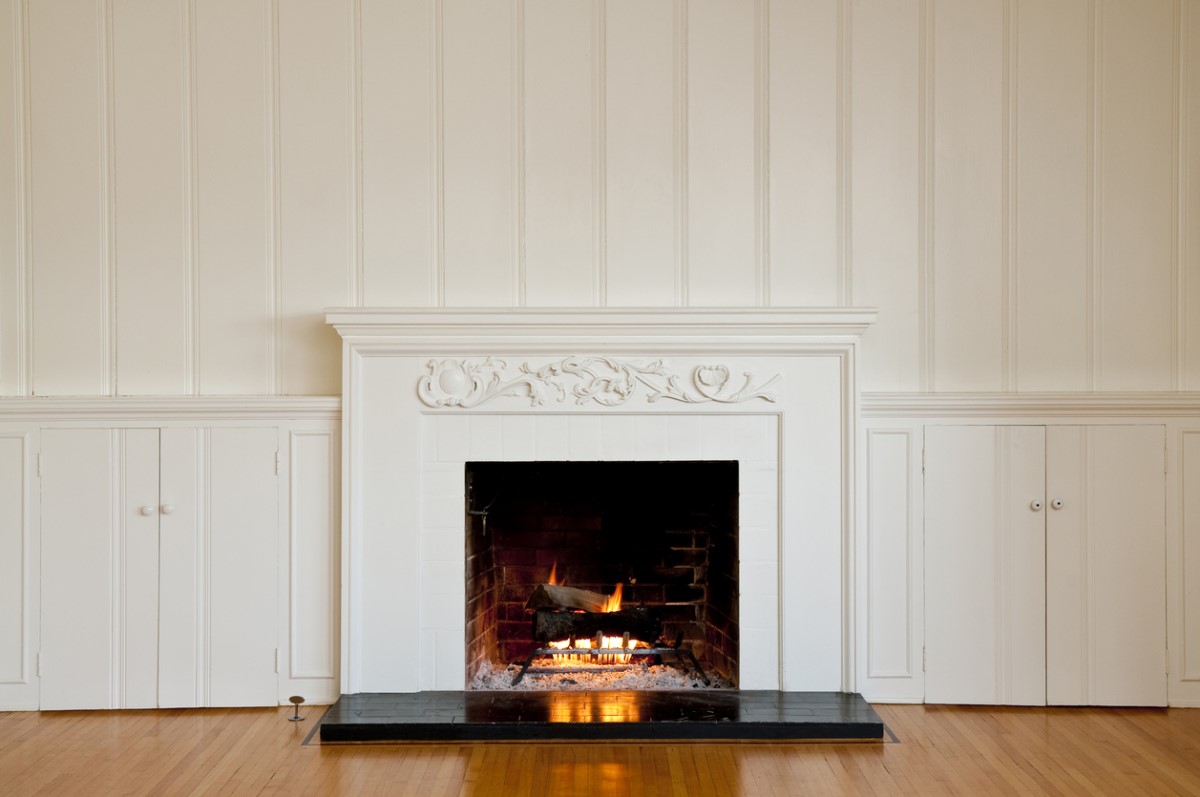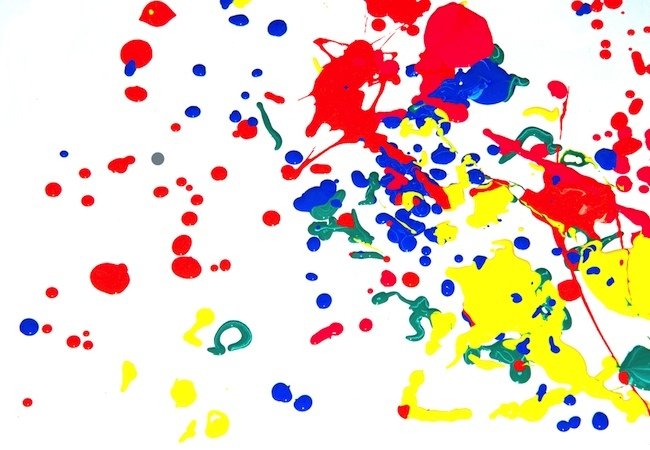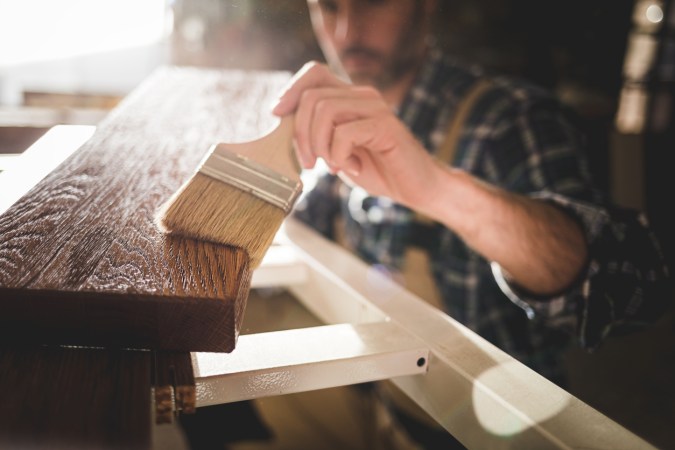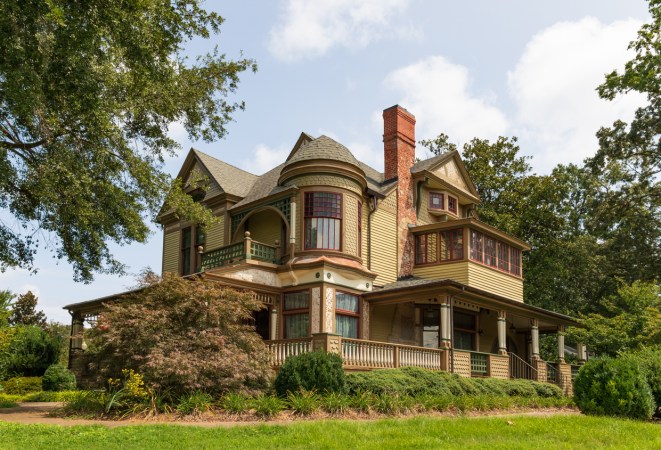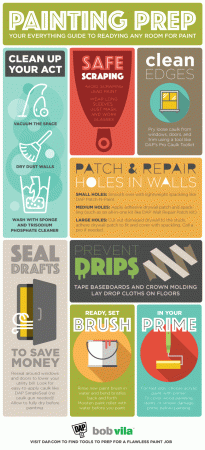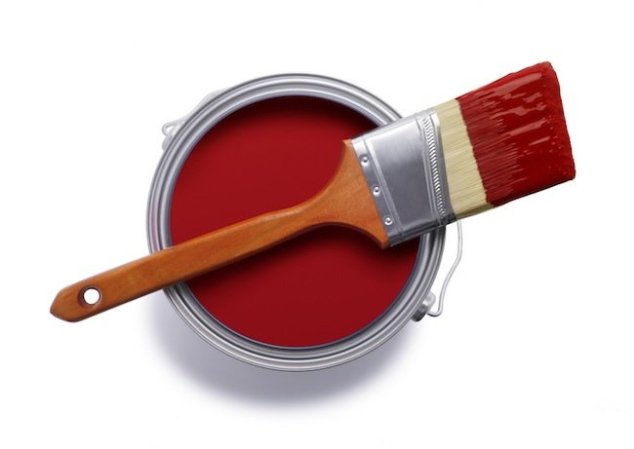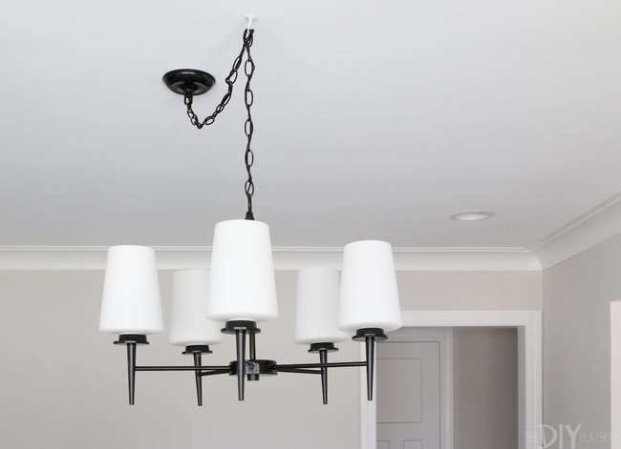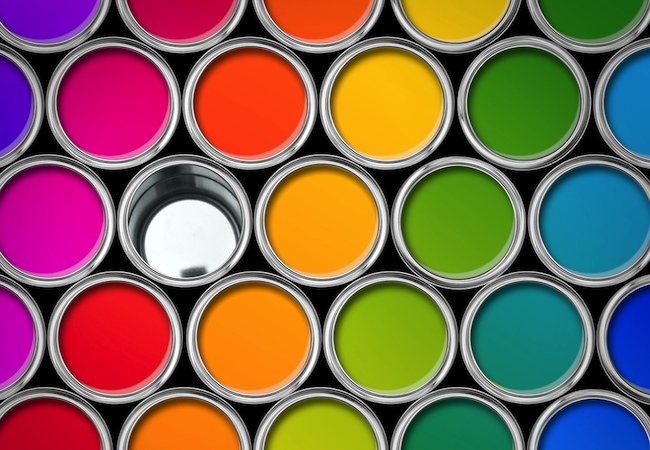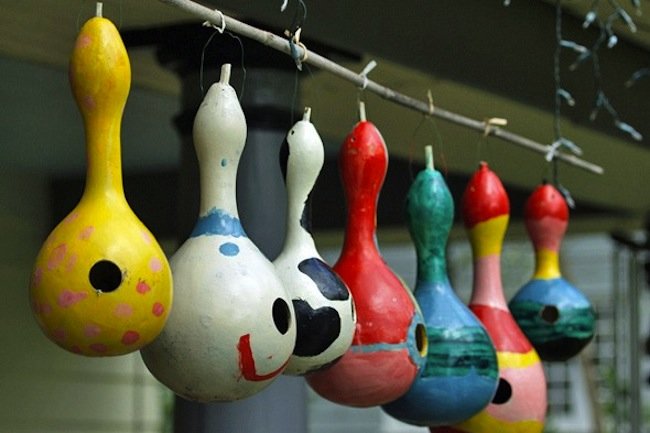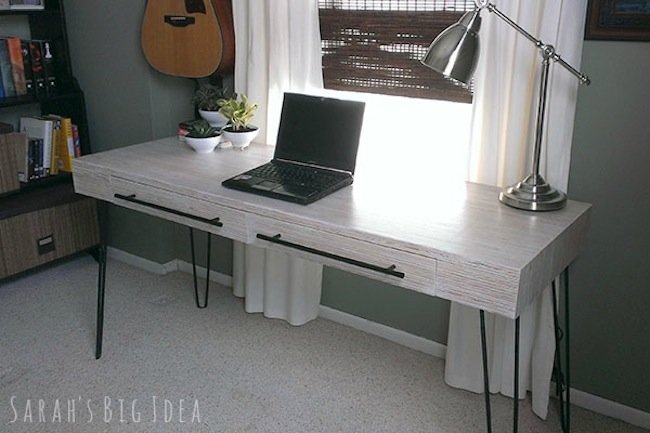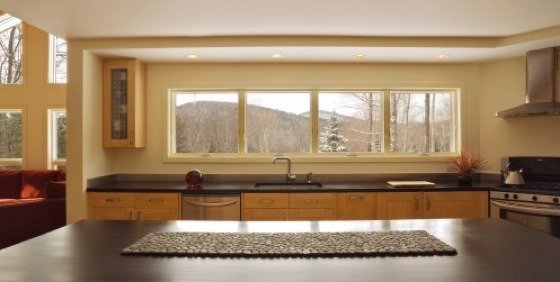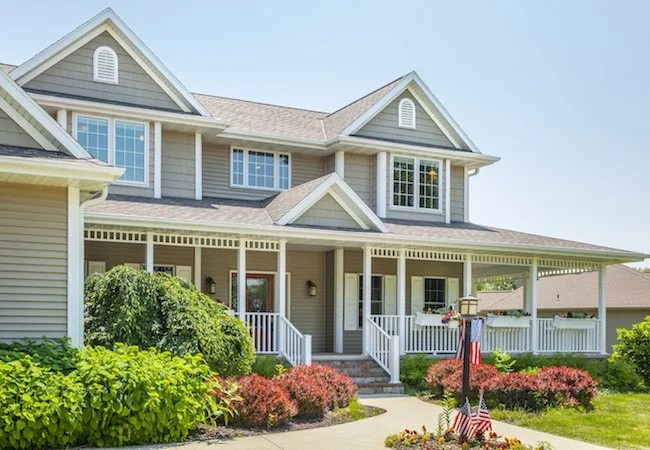We may earn revenue from the products available on this page and participate in affiliate programs. Learn More ›
Q: The white oil-based paint coat on my office cabinet has yellowed in recent months. Is it possible to reverse the yellowing, and if so, how?
A: If that once-white cabinet, door, or wall now looks yellow, your eyes don’t deceive you! For all the benefits of oil-based paint, including dent and scuff resistance, it has a notable drawback: It can turn yellow with time, an effect that’s particularly unsightly on white or off-white surfaces.
Yellowing paintwork can stem from the environment or from the unique drying and aging processes of the oil-based paint itself.
Whether or not you can reverse the discoloration or must tackle the tinge another way depends on the cause. Read on to identify what’s behind the yellowed paint in your home and learn how to restore its original color.
RELATED: 12 Easy Fixes for a Botched Paint Job
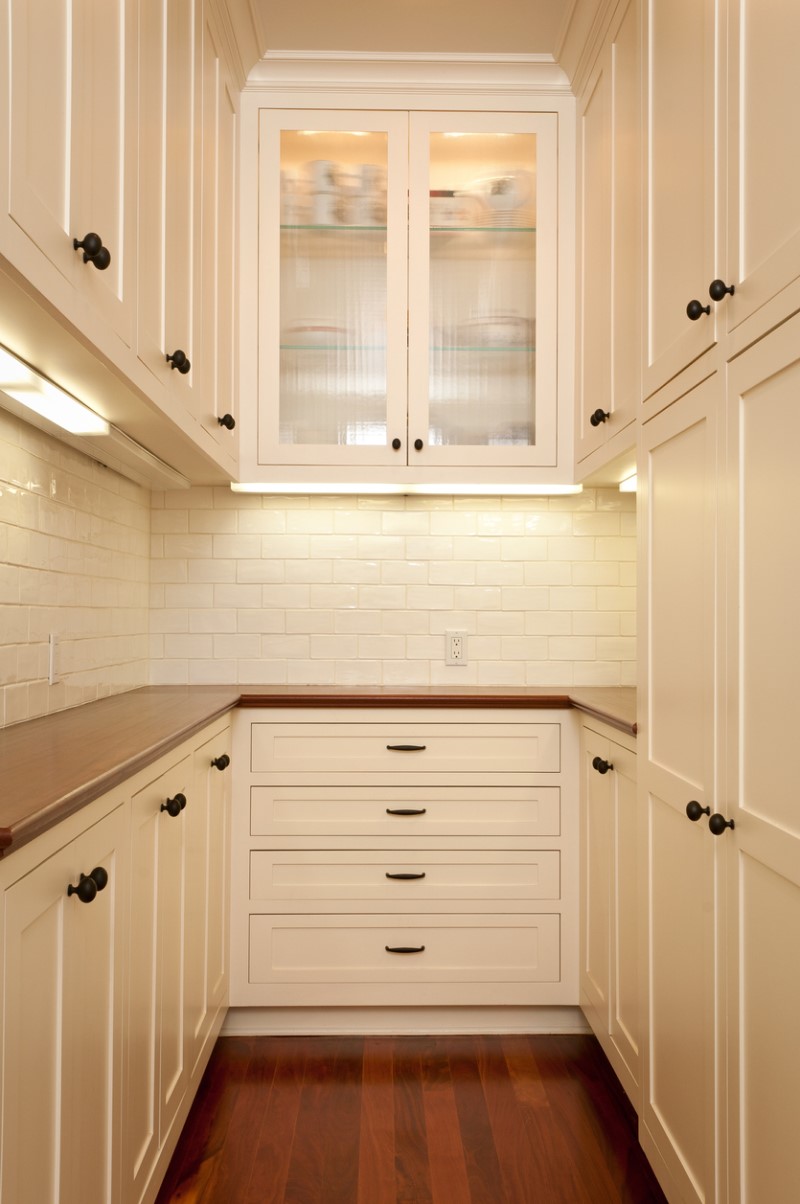
If a lack of light is the culprit, introduce a natural or artificial light source.
As oil-based paint coats dry, unwanted color-producing molecules known as chromophores also form in the paint. These chromophores break down when paintwork is regularly exposed to light, either natural or artificial. When the paint doesn’t get much light, chromophores remain in the paint coat and cast a light to dark yellow tint across the surface. If your paintwork is located in a dimly lit area—such as a cabinet interior or behind a tall piece of furniture—a lack of light is the likely cause of the yellowing.
Fortunately, the effects of chromophores are reversible, as exposing yellowing paintwork to light should break down the problematic molecules in the paint and gradually restore its original color. To shed more light on the paintwork, move any furniture blocking it and draw open the curtains of a nearby window (if the room has one) during daylight hours. If the room lacks windows or natural light doesn’t reach all of its corners, shine an artificial light source such as a table lamp or a wall sconce on the paintwork during waking hours. The paintwork may begin to lighten in as little as one day, but you’ll need to continue to expose it to light over time to minimize future yellowing caused by oxidation (see below).
If moisture is to blame, fix related leaks and remove stains.
Moisture from water, cooking grease, or cigarette smoke can also impart a yellow tinge to paintwork. If you suspect that a leak is behind a water stain, suss out the source of the leak and repair it. Then, gently sand down the stain with medium-grade sandpaper and use a paintbrush to cover the spot with stain-blocking primer in the same shade as the painted surface. To remove cooking grease, fumes, or cigarette smoke, don gloves and goggles, dilute a quarter cup of trisodium phosphate in a gallon of water, then dip a sponge in the solution and wipe down the stain to remove it. Dry the area with a clean rag.
If all else fails, repaint with water-based paint.
If the above techniques don’t reverse the yellowing, the cause is likely oxidation, the natural curing process for oil-based paints. The alkyd (synthetic resins) or plant-based oil react with oxygen in the air to dry and harden the paint, but they may also turn it yellow as the coat ages. While oxidation-induced yellowing is irreversible, you can cover it up by priming and painting over the oil-based paint with water-based options that dry through evaporation rather than oxidation and won’t yellow over time. Just keep this in mind for vibrancy: Water-based paints labeled “all-acrylic” or “100 percent acrylic,” which contain high-quality acrylic resins, tend to produce a more colorfast finish than regular latex paint, which usually contains vinyl resins or a combination of vinyl and acrylic resins.
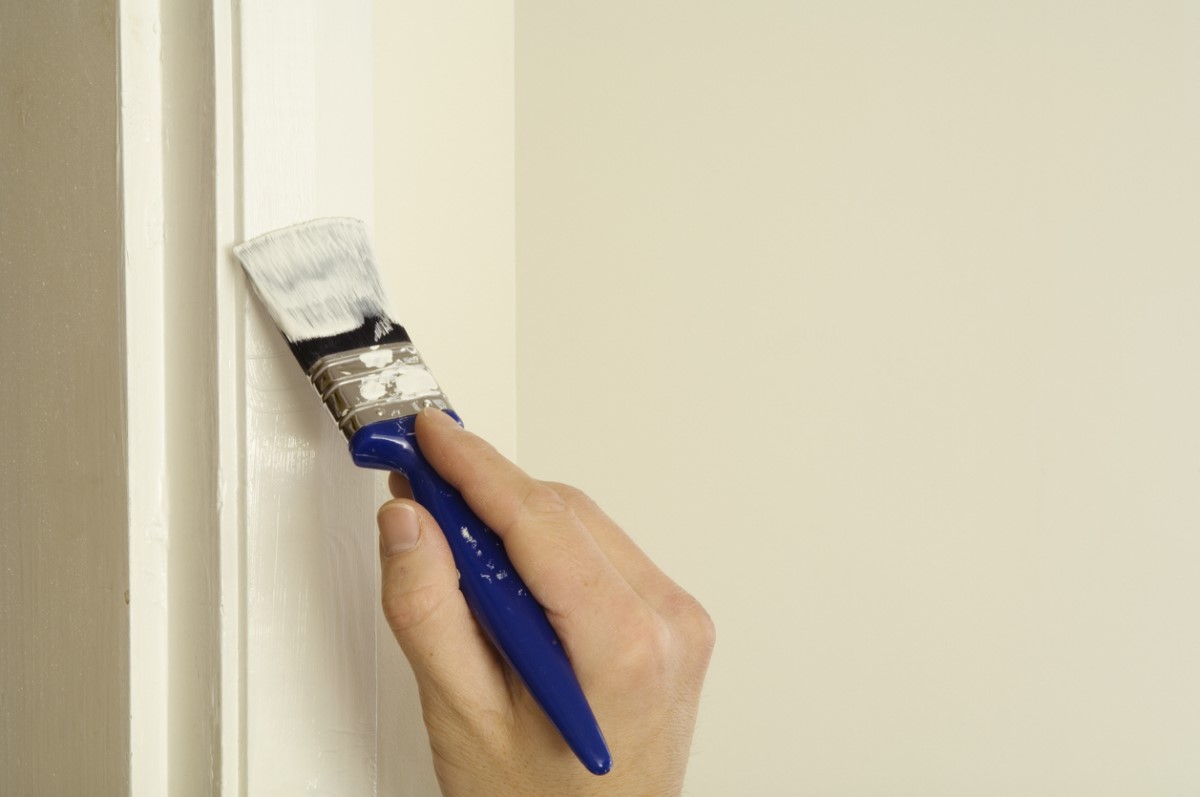
Minimize future yellowing through proper oil-based paint application.
As with other paint problems, prevention is the best solution when it comes to yellowing paintwork. If you’re set on using oil-based paint for your next paint project, use these application tips to minimize future yellowing:
- Only apply oil-based paint in areas that receive ample natural or artificial light.
- Avoid applying oil-based paint near radiators and heat ducts, as their heat can also speed up oxidation and yellowing.
- Install exhaust fans in kitchens to help evacuate lingering cooking fumes before they stain paintwork.
- Avoid smoking in rooms with oil-based paintwork to stave off stains.
- If you plan to apply water-based and oil-based paint on different surfaces in the same room, apply and fully dry the water-based paint before you start in with the oil-based paint. As water-based paint dries, it gives off ammonia, which could hasten the oxidation and yellowing of oil-based paint.
- Consider only using oil-based paint near other materials that naturally change in color over time, such as stained wood. Strategic positioning will make any yellowing look less jarring than if located near white surfaces that are made to stay white, such as colorfast tile.
